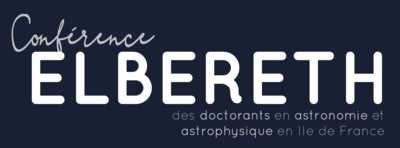Orateur
Description
For the development of future telescopes, or more generally for all heterodyne instruments, high resolution spectroscopic imaging in the THz domain is an important issue that is attracting increasing interest in many scientific fields. This canbe achieved only through the development of a mixer technology in multi-pixel configuration. Of all the existing THz mixers, the Superconducting Hot Electron Bolometer (HEB) mixer achieved the best performance for frequencies well
beyond THz with noise temperatures approaching the quantum limit. It becomes the unavoidable candidate for observation projects applying heterodyne technology and requiring high sensitivities in the THz domain. Several space projects in preparation are using HEB mixers. Thus LERMA is a partner of the Millimetron (Russian satellite) and OST (NASA proposal) projects. Our laboratory has a very good experience of HEB mixers operating in the THz range.
Heterodyne sensitivities in the state of the art were obtained at 2.5 and 1.3 THz on single-pixel mixer. In the perspective of making multi-pixel mixers with the HEB developed in the laboratory, we plan to study a new configuration of the mixer to allow its integration into a multi-pixel structure. This project aims to find a solution, through theoretical and experimental studies, to integrate all the currently distinct modules of a heterodyne receiver inside a single compact and built-in block in order to build a heterodyne camera in the THz domain without restriction on the number or arrangement of the pixels. The work consists of conducting studies on the intermediate frequency (IF) characteristics of HEB, the design of low-noise cryogenic amplifiers, and the miniaturization and integration of polarization and filter circuits. In parallel, a general review of the current mixer block will be performed in order to provide a concept for 2D integration of a large number of single-pixel mixers. The realization of a prototype is envisaged. This work step will be carried out in conjunction with ongoing research projects at the laboratory whose objective is to study the distribution and coupling of THz signals at the input of the multi-pixel mixer . This study is a continuation of our current developments on compact and ultra-sensitive THz detection systems to better meet the needs of future space observatories.
During my presentation, I will show my work I have done so far during half of my thesis.
Day constaints
All the days are possible for me
| Field | Instrumentation |
|---|

